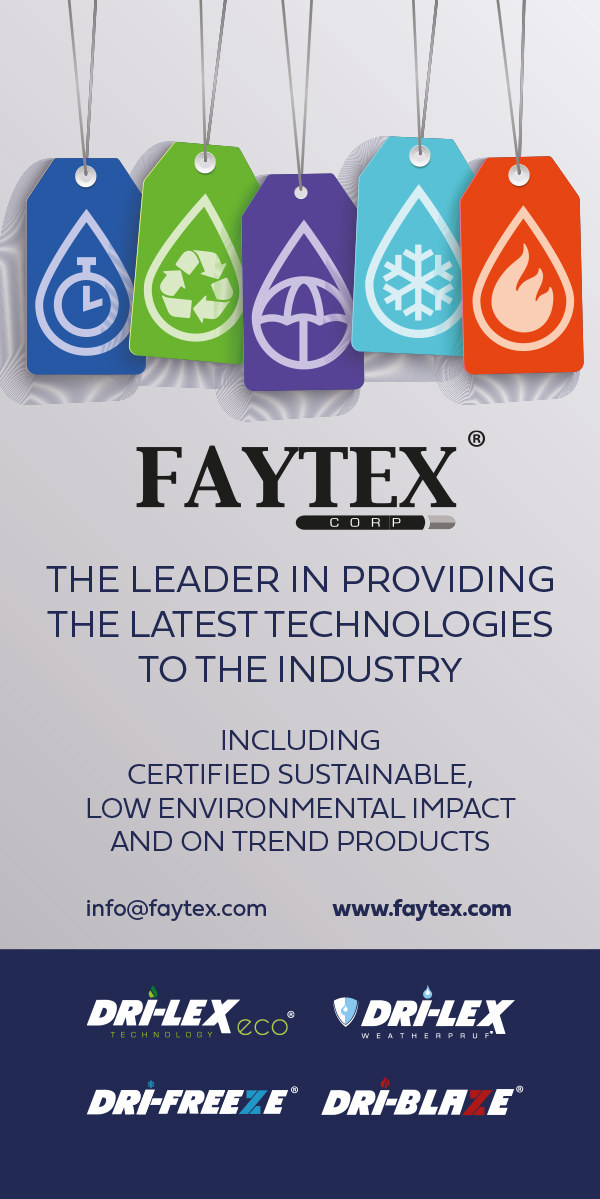Biomaterials for footwear

Maria José Ferreira, CTCP/BioShoes4All Consortium, Portugal
The bioeconomy covers all sectors and systems that rely on biological resources such as animals, plants, derived biomass and organic waste. It also includes economic and industrial sectors that use biological resources and processes to produce bio-based products. A bio-based footwear economy using renewable biological resources sustainably to produce biomaterials will help the industry reduce dependence on non-renewable and unsustainable resources and accelerate progress towards a circular and low-carbon economy. It will also address global commitments associated with the United Nations 2030 Agenda for Sustainable Development and the Paris Agreement by ensuring sustainable consumption and production patterns, combating climate change and its impacts.
In footwear, materials, components and waste are the highest contributors to total GHG emissions and research and innovation are core to pursuing 2030 targets. The sector needs to develop and deploy the ‘next generation’ of sustainable materials and processes, including biological and plant-based materials and man-made bio-based materials. Positive steps in this direction are being taken within BioShoes4All, a Portugal PRR, (Recovery and Resilience Plan) Integrated project.
The project comprises 50 companies covering the whole footwear value chain including leather, polymers, soles, software, production equipment, leather goods, footwear and retail representation and leadership, plus 20 R&D bodies with complementary capabilities. It is coordinated by the author and is divided into five parts: Biomaterials, Ecological Footwear, Circular Economy, Advanced Production Technologies, Training and Promotion, and it is developing new leathers, bio-based materials, recycled materials, traceability tools, production systems, footwear concepts and business models.
Light Leather
Chromium (III) tanning has been questioned due to the possibility of oxidising to chrome (VI). In response to this concern, a great deal of research has been carried out in recent years. This has led to the development of chromium-free processes based on the use of glutaraldehyde, aided by metals such as aluminum or synthetic tannins. This has made it possible to produce wet-white leather with shrinkage temperatures of about 80°C. However, obtaining very soft and light leather from the current wet-white is a limitation. To compensate for the lack of filling capability of the aldehydes, resins and vegetable extracts along with additions of fats are necessary. This leads to soft albeit denser leather.
Project partners Dias Ruivo (leather manufacturer) and (R&D) teams from ISEP and CTIC work together to study the enzymatic modification of leather’s internal structure. They experimented with alternative tanning agents, as glutaraldehyde has recently come under scrutiny under its potential toxicity. The aim was to develop processes to produce a soft and wet-white leather with lower density. Final tests indicated a metal-free tanning alternative, with a shrinkage temperature of around 80°C. Leathers using this method can take different finishes such as aniline, in any colour and in various thicknesses with good physical resistance that is considered adequate for use in shoes and boots.
Wet-white bisphenol ‘free’ leather
Bisphenols have become an important topic of discussion as regards leather and footwear, especially since the European Chemicals Agency's proposed restriction on them. This will have an impact on the leather manufacturing process, which is why it has become imperative to deepen our knowledge of them. Bisphenols are a family of very similar synthetic organic chemicals with two hydroxyphenyl functional groups that allow polymerisation reactions to form larger molecules. Each type is identified by a CAS number, including Bisphenol-A (CAS 80-05-7), Bisphenol-B (CAS 77-40-7), Bisphenol-F (CAS 620-92-8) and Bisphenol-S (CAS 80-09-1).
To our knowledge, none of these bisphenols are used directly as raw materials in leather manufacturing processes. However, Bisphenol-F and Bisphenol-S can potentially be found in some condensed chemical products as unwanted by products of secondary reactions of their production processes. In the leather industry, these condensed chemicals, or syntans, are mainly used in pre-tanning and retanning processes to enhance important leather characteristics such as softness, tear resistance or whitening effect. For these reasons, replacing them while maintaining the leather’s performance represents a challenge. This challenge inspired the project R&D team, led by Indutan, a sheep and goat leather manufacturer, to develop durable and functional leathers with bisphenol levels below 500ppm (parts per million).
Exhaustive work to carefully test, review and develop new leather processing recipes, resulted in new leather products in the high added values range with low bisphenol F and bisphenol S values, which fulfil the required specifications.
From the results obtained, it can be concluded that the new wet-white tanning process resulted in functional and durable leathers with both bisphenol S and F levels well below 500ppm. In addition, in terms of general properties, the leathers developed are very similar to those previously produced by the company and considered to be the standard, with a very pleasant feel, degree of filling and are ready to be produced on a large scale.
New retanning and filling agents
Leather production gives added value to a byproduct of the human food industry. This renewable biomaterial behaves in footwear like a ‘second skin’ that presents excellent physical, durability and comfort properties. Its production involves the use of water and chemicals, and teams from the project together with CTCP are studying ways to recycle these ingredients and production wastes, and estimate the new product’s reduced life cycle impact. Chemical products producer Aquitex, leather manufacturer Aveneda and the R&D partners, have been engaged in the possible value of bovine hair and tanned waste generated during the wet-white tanning process in developing biochemicals and leathers.
The process they have developed involves alkaline treatment/ hydrolysis of the waste to obtain a concentrated protein hydrolysate, followed by treatment with chemical agents to produce bio chemicals and products with around 40% solids content. These bioproducts’ retanning and filling properties produce wet-white leathers such as aniline or nubucks with good surface appearance, softness, degree of filling and physical properties.
Origin Peel bio-based coated textiles
The sustainability of materials has achieved unprecedented importance, particularly in the search for biobased approaches which favour raw materials of biological origin and thus offer alternatives with a lower carbon footprint. However, in coated textiles many products on offer are still made from raw materials of fossil origin. It is now possible to synthesise polyurethanes partly from raw materials of plant origin such as vegetable oils modified into polyols, which are then polymerised with reagents of fossil origin known as BioTPU. These can therefore be considered a more sustainable alternative to fossil-based polymer coatings. A complementary approach to increasing the proportion o bio-based content is to incorporate bio-charges and fibres into the coating and reduce the fossil-based content.
Portugal is one of the largest producers of olive oil and the actual olive stone represents an abundant biomass estimated to be 60,000 tonnes per year and currently without any other use other than burning to create energy. This has contributed to it being chosen by Monteiro Fabrics as a bio-waste to be incorporated into biocoating formulations. The ORIGIN material created by the company within the BioShoes4All project is the result of the development of a BioTPU and water-based formulation containing olive stones applied to a cotton fibre textile base. The company says that the physical and mechanical characteristics fulfil the specifications for shoe uppers. It also has a proven 72% bio-based carbon content in accordance with ASTM D6866.
Chestnuts are traditionally used for human and animal consumption given their nutritional properties and Portugal is, again, a major producer. Processing generates various by-products, such as shells, flowers, leaves and wood. Monteiro Ribas, together with local partners, collects these biomaterials. They are crushed and ground into a fine powder which is then turned into an innovative product. Faced with the challenge of developing planet-friendly solutions, the company has created its Peel collection incorporating 60% plant-based materials including chestnut waste, organic cotton and natural oils. By making these solutions available in an attractive and easy way, it reinforces its commitment to best environmental practices.
The material is offered in a range of eight colours, allowing customers to create innovative products without having to choose between cost, performance, aesthetics or sustainability.
It is a technologically viable product, ready to be produced on a large scale and without compromising its performance. Technical requirements for use in cemented footwear are all met including high Bally flex resistance (150000 cycles), Martindale abrasion (400000 cycles), resistance to friction (Crockmeter), sweat, light fastness among others. Peel’s 65% bio-based carbon content has been verified in accordance with ASTM D6866.
All credits: CTCP / BIOSHOES4ALL












